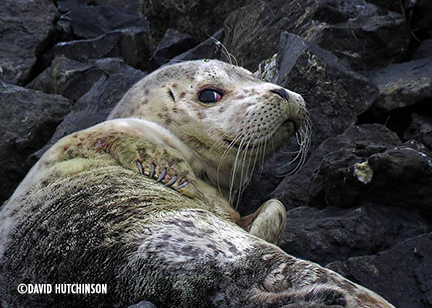Resting pup causes concern at Harbor Island shipyard
Jan/10/17 08:03 AM

On Monday, we had one of our first responses of 2017. Seal Sitters dedicated hotline (206-905-7325) received a report of a seal onshore at Vigor Shipyards. After passing through security, First Responders David and Eilene were escorted to the seal pup’s location on the rocks below the busy shipbuilding and repair facility, situated at the northwest end of heavily industrial Harbor Island, at the mouth of the Duwamish Waterway.
The seal’s condition and behavior were observed and evaluated, seemingly in fairly typical body condition for a pup this time of winter (a few nicks and abrasions and somewhat thin). It should be noted that while pups can appear to be doing reasonably well, their health can deteriorate rapidly within days. Arrangements were made to notify Seal Sitters’ hotline if the seal did not enter the water within 24 hours or a significant injury was observed.
Never hesitate to contact Seal Sitters MMSN with any concerns about marine mammals on shore, alive or dead. Our trained responders will come to the site to evaluate the situation and determine if a seal pup meets NOAA’s requirements to be considered for rehabilitation. In the event of dead animals, an examination is performed whenever possible and information is entered into NOAA’s national database, monitoring the health of marine mammal populations.
Harbor Island and the Duwamish Waterway are on the eastern edge of Seal Sitters MMSN’s territory. View (and download) a map of NOAA’s Marine Mammal Stranding Networks serving Puget Sound, including territories and contact information, here.







